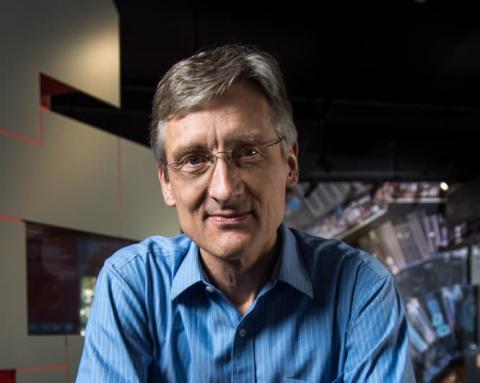From 23 to 26 January, CERN hosted a collaboration meeting for the Deep Underground Neutrino Experiment, DUNE, an international collaboration of some 950 people from 161 institutions in 30 countries. Located in South Dakota’s Sanford mine, DUNE will study neutrinos sent through the Earth from Fermilab, some 1300 km away, but there’s a very good reason why the meeting took place at CERN.
In 2015, CERN signed a Memorandum of Understanding with the US Department of Energy to develop transatlantic cooperation in particle physics. Through this agreement and subsequent addenda that are currently being concluded, the US is contributing to both accelerator and detectors in the HL-LHC project, while CERN provides a focal point for European contributions to neutrino experiments outside Europe.
Since then, there has been much progress on both sides of the Atlantic. In September last year, the Department of Energy approved the construction of experimental caverns at the Sanford mine, while here at CERN, the Neutrino Platform has been completed and handed over for the operation of experiments. An extension to the large experimental hall, EHN1, the CERN Neutrino Platform is an R&D facility dedicated initially to liquid argon time projection chamber detector technologies. It is there that we are constructing two 6 x 6 x 6 m3 prototype building blocks that will make up the cryostats for the full 40-kilotonne DUNE detector, using an innovative and patented cooling technology. The prototype modules are scheduled for beam testing before the accelerator complex moves into the LHC’s second long shutdown at the end of 2018.
Organisationally, CERN is also adapting to the new shape of global neutrino collaboration. A neutrino physics group has been set up in the Experimental Physics department to develop readout, algorithms and computing, while the Theory department has added a neutrino physics institute to its programme of activity.
All this stems from the European Strategy for Particle Physics, through which CERN provides a focal point for the high-energy frontier, while bringing European expertise to neutrino programmes elsewhere in the world. As well as DUNE, this includes the refurbishment of the ICARUS detector, which will be shipped to Fermilab in April this year, and support for the Japanese WAGASCI experiment with a magnetised iron detector, Baby-MIND. Projects are also under consideration for contributions to the Tokai to Kamioka experiment, T2K, and the ambitious, yet-to-be-approved, Hyper-K experiment, also in Japan’s Kamioka mine.
The CERN Neutrino Platform is a springboard for European scientists to participate in projects elsewhere in the world, complementing the inflow of scientists from around the world to CERN. Particle physics is a truly global endeavour, embracing the free movement of people and knowledge. More broadly speaking, the free exchange of ideas among people is the lifeblood of the science and innovation that underpins our modern society. CERN is fully committed to this principle, as witnessed by our contributions to the global neutrino endeavour. In this, as in all things, success is a two-way street.
Read more in two articles about DUNE in the March issue of the CERN Courier:

